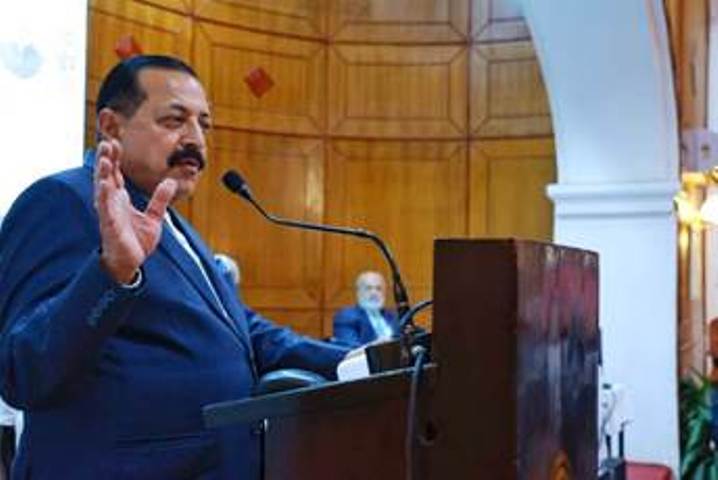India's 'Anusandhan' Research Foundation Aims to Revolutionize Innovation Ecosystem
Dr. Singh concluded his address with a call to dismantle siloed approaches in scientific and academic research.

- Country:
- India
In a significant stride towards building a world-class innovation and research ecosystem, Union Minister Dr. Jitendra Singh today addressed the Lok Sabha and detailed the ambitious vision behind India’s newly launched National Research Foundation (NRF), formally named ‘Anusandhan’. Emphasizing an inclusive and forward-looking research architecture, Dr. Singh outlined the crucial role of private sector collaboration, equitable funding, and strategic national priorities in shaping the foundation’s trajectory.
Public-Private Synergy: The Core of Anusandhan
Dr. Singh highlighted that Anusandhan is not just a governmental effort but a collaborative venture that welcomes and relies on significant private sector and philanthropic contributions. Out of the projected ₹50,000 crore funding corpus for the NRF over the next five years, ₹14,000 crore will be allocated by the government, while a lion’s share of ₹36,000 crore is expected from private players, industry leaders, and philanthropic institutions.
He noted, “Our focus is not only to enable innovation but to ensure its sustainability. Equity-based research funding will support startups and research clusters, allowing them to grow into global players.”
Four Pillars of Funding
To ensure a comprehensive support system for the research ecosystem, Dr. Singh detailed the four-pronged funding structure of the NRF:
-
ANRF Fund – The core government-backed financial reservoir for foundational research.
-
Innovation Fund – Targeted towards high-risk, high-reward research and startup incubation.
-
Society for Engineering and Research Board (SERB) – Now integrated into the NRF, to streamline technical and engineering research funding.
-
Special Purpose RDI Fund – A massive ₹20,000 crore fund dedicated specifically to Research, Development, and Innovation across strategic sectors.
“This multi-channel model has been carefully crafted after studying international best practices, especially those followed in countries like the United States. We believe Anusandhan is a refined and more adaptable version suited for India’s unique needs,” Dr. Singh stated.
Regional Inclusivity and Merit-Based Allocation
Responding to concerns about regional balance in fund distribution, particularly from Members of Parliament representing states like Rajasthan, Dr. Singh assured the House that fund allocation will be both merit-driven and need-sensitive.
“Rajasthan and similar regions will benefit from a larger potential pool, especially if local industries and institutions come forward. Private sector participation will be key in determining the actual investments. No region will be left behind—our model ensures equitable access based on proposals and outcomes,” he asserted.
From Fragile Five to First Five: India's Innovation Journey
Dr. Singh reflected on India’s phenomenal transformation over the past decade. “We’ve come a long way from being tagged as one of the ‘Fragile Five’ economies. Today, we are chasing a position among the ‘First Five’ global innovation leaders,” he declared.
He credited much of this success to public-private synergy, citing India’s achievements in space technology and vaccine development as stellar examples. “Our ISRO missions and indigenous vaccine rollouts during the pandemic have demonstrated what collaborative science can achieve.”
India's Research Landscape: A Global Contender
The Minister shared some striking statistics showcasing India’s ascension in global innovation rankings:
-
From 350 startups in 2014 to over 1.75 lakh today, India is now home to the third-largest startup ecosystem in the world.
-
In patent filings, India has risen to 6th globally, with a notable 56% of patents filed by Indian residents, indicating strong domestic innovation.
-
In research publications, India stands 4th globally, and is aiming to move further up by 2029.
“This is a testament to our talent pool and our policy direction. The government is committed to empowering researchers, entrepreneurs, and academic institutions alike,” he said.
End of Siloed Thinking: A New Collaborative Era
Dr. Singh concluded his address with a call to dismantle siloed approaches in scientific and academic research. “The age of isolated efforts is over. We are building synergies between government bodies, academic institutions, startups, and industry. Anusandhan is a manifestation of this collaborative spirit,” he emphasized.
As India accelerates toward becoming a global hub of research and innovation, the establishment of Anusandhan marks a pivotal chapter. With strategic funding, robust infrastructure, and a thriving partnership between the public and private sectors, the foundation is set to catalyze transformative change across scientific domains.
- READ MORE ON:
- Dr. Jitendra Singh
- Anusandhan
- National Research Foundation










